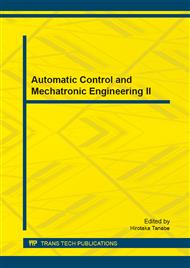p.442
p.446
p.451
p.457
p.461
p.465
p.473
p.479
p.483
Study on Heat Conduction of Microwave Oven
Abstract:
For the heat distribution problem of the baking dish food in microwave oven, we established a partial differential equation model for the unsteady heat conduction problems, and solved this model by using the finite element method. Then, we drew the figures of temperature field distribution for the circular pan and the rectangular pan at a certain time respectively. Based on the conjecture that the part of their internal circular area for the graphics between the circle and rectangle are uniformly distributed, we verified the relationship between the pan evenly heated area and the shape of the pan, then we got the maximum heat distribution area for the circular pan and the rectangular pan, rectangular pan and regular hexagon pan.
Info:
Periodical:
Pages:
461-464
Citation:
Online since:
September 2013
Authors:
Price:
Сopyright:
© 2013 Trans Tech Publications Ltd. All Rights Reserved
Share:
Citation:


